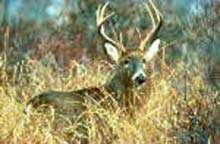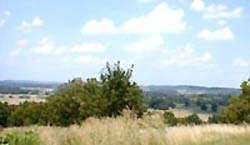General Pleasonton Days
Starting date:
Ending date:
Event# 913-352-8257
Event Details
Held annually on the first weekend in October, General Pleasonton Days celebrates the rich Civil War history of the City of Pleasanton and commemorates General Alfred Pleasonton the Union General in command at the Battle of Mine Creek and our communities namesake.
Linn County's biggest parade, kids games, giant inflatables, adult games, Cookee's Drive-In Car Show and more await you in Pleasanton Kansas. Voted Linn County's favorite community event 2 years in a row!!
General Pleasonton Days
Address : Main Street & Dunlap Park
Marais des Cygnes National Wildlife Refuge KS
Phone : 913-352-8257 (Always call and confirm events.)
Phone : 913-352-8257 (Always call and confirm events.)
Web: www.pleasantonkansas.org
Admission Fee : Free
Festivals
Marais des Cygnes National Wildlife Refuge Hunting
Marais des Cygnes NWR Hunting
 Predominant species hunted at Marais des Cygnes National Wildlife Refuge are quail, turkey, and white-tailed deer. Squirrel and rabbits are hunted to a lesser extent. Waterfowl hunting is generally limited to small farm ponds, mine ponds, and the Marais des Cygnes River. However, during flood events, as much as 2,000 additional acres of flooded timber and old fields may become available for hunting.
Predominant species hunted at Marais des Cygnes National Wildlife Refuge are quail, turkey, and white-tailed deer. Squirrel and rabbits are hunted to a lesser extent. Waterfowl hunting is generally limited to small farm ponds, mine ponds, and the Marais des Cygnes River. However, during flood events, as much as 2,000 additional acres of flooded timber and old fields may become available for hunting.
Deer and spring turkey hunting are open only to those possessing a valid Refuge Access Permit. These permits are limited in number and are distributed through an application and drawing process. To apply, call or write the office any day in February for Spring Turkey, August for Archery Deer, and November for Anterless Deer. State your request to apply for a permit and provide your name, address, and phone number. You may leave this information on the phone answering machine if you clearly spell your name and address. You may also provide the names/addresses for other hunting partners.
A drawing will be conducted the first week after the application period closes. All applicants will be notified in writing as to whether or not they were selected for a permit. Hunting permits are valid throughout the respective hunting season. Permits may not be transferred or used by anyone other than the person on the permit.
 Predominant species hunted at Marais des Cygnes National Wildlife Refuge are quail, turkey, and white-tailed deer. Squirrel and rabbits are hunted to a lesser extent. Waterfowl hunting is generally limited to small farm ponds, mine ponds, and the Marais des Cygnes River. However, during flood events, as much as 2,000 additional acres of flooded timber and old fields may become available for hunting.
Predominant species hunted at Marais des Cygnes National Wildlife Refuge are quail, turkey, and white-tailed deer. Squirrel and rabbits are hunted to a lesser extent. Waterfowl hunting is generally limited to small farm ponds, mine ponds, and the Marais des Cygnes River. However, during flood events, as much as 2,000 additional acres of flooded timber and old fields may become available for hunting.Deer and spring turkey hunting are open only to those possessing a valid Refuge Access Permit. These permits are limited in number and are distributed through an application and drawing process. To apply, call or write the office any day in February for Spring Turkey, August for Archery Deer, and November for Anterless Deer. State your request to apply for a permit and provide your name, address, and phone number. You may leave this information on the phone answering machine if you clearly spell your name and address. You may also provide the names/addresses for other hunting partners.
A drawing will be conducted the first week after the application period closes. All applicants will be notified in writing as to whether or not they were selected for a permit. Hunting permits are valid throughout the respective hunting season. Permits may not be transferred or used by anyone other than the person on the permit.
Marais des Cygnes National Wildlife Refuge Fishing
Marais des Cygnes NWR Fishing
 Many of the farm and mine ponds provide fishing opportunities for bass, crappie, and sunfish. The Marais des Cygnes River and flood plain ponds provide additional fishing opportunities for flathead and channel catfish, crappie, and walleye. Access is mostly limited to walking. Non-motorized boats, and boats with electric motors, are allowed but getting boats in and out is generally an arduous venture.
Many of the farm and mine ponds provide fishing opportunities for bass, crappie, and sunfish. The Marais des Cygnes River and flood plain ponds provide additional fishing opportunities for flathead and channel catfish, crappie, and walleye. Access is mostly limited to walking. Non-motorized boats, and boats with electric motors, are allowed but getting boats in and out is generally an arduous venture.
 Many of the farm and mine ponds provide fishing opportunities for bass, crappie, and sunfish. The Marais des Cygnes River and flood plain ponds provide additional fishing opportunities for flathead and channel catfish, crappie, and walleye. Access is mostly limited to walking. Non-motorized boats, and boats with electric motors, are allowed but getting boats in and out is generally an arduous venture.
Many of the farm and mine ponds provide fishing opportunities for bass, crappie, and sunfish. The Marais des Cygnes River and flood plain ponds provide additional fishing opportunities for flathead and channel catfish, crappie, and walleye. Access is mostly limited to walking. Non-motorized boats, and boats with electric motors, are allowed but getting boats in and out is generally an arduous venture.
Marais des Cygnes National Wildlife Refuge Birdwatching
Marais des Cygnes NWR Birding
Birding at Marais des Cygnes National Wildlife Refuge is especially good in late spring when over 30 species of warblers migrate through the area and in early summer when breeding birds are defending territories. The large diversity of plant communities including large tracts of forest, grassland, brushland, open and wooded wetlands, and river and streams provide for an equally diverse bird population. Some breeding species found on the refuge include Kentucky warbler, northern parula warbler, red shouldered hawk, turkey vulture, scissor-tailed flycather, and painted bunting.
There currently are no hiking trails available, however there are several service roads which are available for hiking but are not available for public vehicle use and are therefore sparsely used by vehicles. These roads traverse a wide variety of habitats and vary in length from 1/4 mile to 1 1/4 miles long and are marked as a dashed line on the refuge map.
Birding at Marais des Cygnes National Wildlife Refuge is especially good in late spring when over 30 species of warblers migrate through the area and in early summer when breeding birds are defending territories. The large diversity of plant communities including large tracts of forest, grassland, brushland, open and wooded wetlands, and river and streams provide for an equally diverse bird population. Some breeding species found on the refuge include Kentucky warbler, northern parula warbler, red shouldered hawk, turkey vulture, scissor-tailed flycather, and painted bunting.
There currently are no hiking trails available, however there are several service roads which are available for hiking but are not available for public vehicle use and are therefore sparsely used by vehicles. These roads traverse a wide variety of habitats and vary in length from 1/4 mile to 1 1/4 miles long and are marked as a dashed line on the refuge map.
Marais des Cygnes National Wildlife Refuge Nature Preserves
Marais des Cygnes NWR Wild Food Harvest
 Picking of berries, mushrooms, and nuts is another popular outdoor activity on the Marais des Cygnes National Wildlife Refuge. There are some refuge regulations which guide public use.
Picking of berries, mushrooms, and nuts is another popular outdoor activity on the Marais des Cygnes National Wildlife Refuge. There are some refuge regulations which guide public use.
Wild strawberries and blackberries (early summer) and persimmons (late fall) are abundant on many portions of the refuge. Morel (spring) and Oyster Mushrooms (summer) as well as many other kinds of mushrooms are found throughout the refuge. Pecan and black walnut trees are very common on the refuge, especially in the floodplains of the Marais des Cygnes River and other streams, and at abandoned farmsites. Some years (mast years) will produce "bumper" crops of nuts while on other years only a few trees will produce well. Nuts are generally harvested in late fall.
 Picking of berries, mushrooms, and nuts is another popular outdoor activity on the Marais des Cygnes National Wildlife Refuge. There are some refuge regulations which guide public use.
Picking of berries, mushrooms, and nuts is another popular outdoor activity on the Marais des Cygnes National Wildlife Refuge. There are some refuge regulations which guide public use.Wild strawberries and blackberries (early summer) and persimmons (late fall) are abundant on many portions of the refuge. Morel (spring) and Oyster Mushrooms (summer) as well as many other kinds of mushrooms are found throughout the refuge. Pecan and black walnut trees are very common on the refuge, especially in the floodplains of the Marais des Cygnes River and other streams, and at abandoned farmsites. Some years (mast years) will produce "bumper" crops of nuts while on other years only a few trees will produce well. Nuts are generally harvested in late fall.